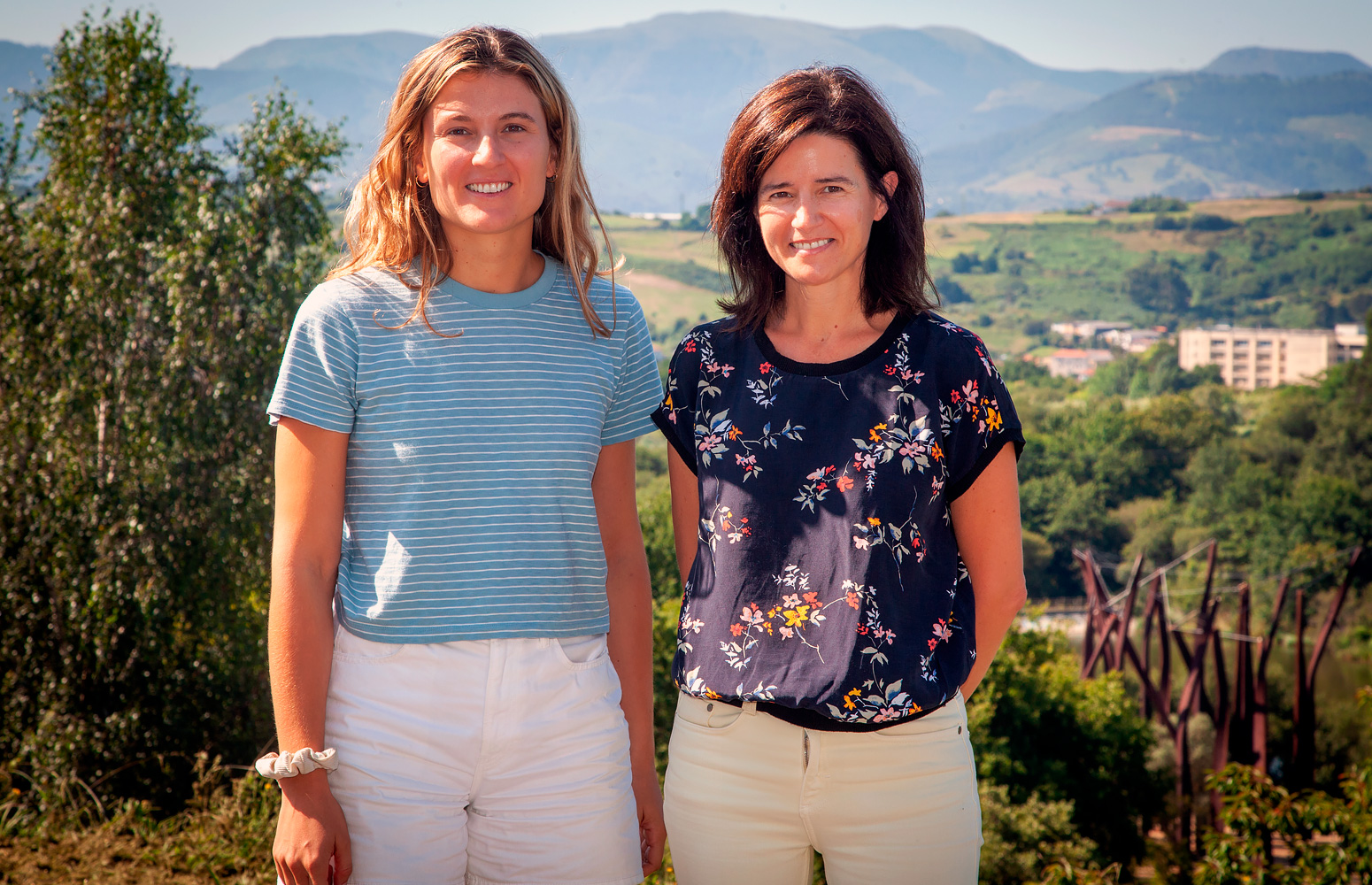<a href="https://www.sciencedirect.com/science/article/pii/S2590006423001400?via%3Dihub" target="_blank">A study</a> led by the UPV/EHU’s <a href="https://www.ehu.eus/web/gmmmt">Magnetism and Magnetic Materials group</a> has succeeded in modifying certain characteristics of a bacterium known for its magnetic properties, and turning it into a promising clinical diagnostic agent. By adding metallic elements (terbium or gadolinium) to the bacterial culture medium, the bacteria incorporate them and are turned into a fluorescent or dual contrast agent, which is very useful in magnetic resonance imaging.
Making a bacterium fluorescent and turning it into a double contrast agent for magnetic resonance imaging
A study led by the University of the Basque Country (UPV/EHU) has managed to get the bacterium to incorporate two compounds that provide it with new functionalities for clinical diagnosis
- Research
First publication date: 01/08/2023

The UPV/EHU’s Magnetism and Magnetic Materials group has been working for more than a decade with magnetotactic bacteria, a group of aquatic bacteria that in their natural environment synthesise crystals of magnetite (an iron ore), which act as compasses and enable these bacteria to orient themselves and navigate along the Earth's magnetic field lines. “The intrinsic functionalities of these bacteria render them very interesting for the clinical setting, as they have all the characteristics needed to be used as nanorobots. Apart from the fact that they can be guided by means of magnetic fields to the area to be treated, numerous studies have demonstrated the potential of magnetotactic bacteria for use in various practices: magnetic hyperthermia (an anti-cancer therapy); as drug carriers; and as contrast agents for magnetic resonance imaging,” explained Lucía Gandarias-Albaina, a member of the research group and lead author of this study.
However, a difficulty arises with these bacteria: “It is difficult to modify them; their interesting features are intrinsic, but it is not easy to incorporate new functionalities,” said the researcher. One of the strategies followed in this regard is to enrich the culture medium with certain substances and see what effect this has on the bacteria.
In collaboration with a research group from the University of Cantabria, which specialises in rare earths (elements also known as lanthanides), and with the participation of other researchers from centres such as CIC biomaGUNE, the Helmholtz-Zentrum Berlin (Germany) and the Institute of Biosciences and Biotechnologies BIAM-CEA (France), they set out to study the effect of adding terbium (Tb) and gadolinium (Gd) to the culture medium of Magnetospirillum gryphiswaldense bacteria, in other words, to see “how the potential of this bacterium as a biomedical agent would change by incorporating these elements,” said Gandarias.
Biomedical agents with enhanced diagnostic capabilities
New functionalities emerged when terbium and gadolinium were incorporated into the bacteria. The researcher describes it thus: “In our analysis we saw that terbium makes the bacteria fluorescent, so they could be used as biomarkers because it would be possible to track where they are. We also found that by incorporating gadolinium, the bacteria acquire the character of dual contrast agents for MRI scans, which is where research in this field of study is heading.”
It is known that MRI requires the person undergoing it to take contrast agents, a class of products that improve imaging differentiation between normal and damaged tissue and facilitate diagnosis. Two types of contrast agents are currently used: positive, or T1, which are the most commonly used and are based on gadolinium compounds, and negative, or T2, which are iron oxide nanoparticles. “Since our bacteria already had iron particles as part of their magnetic particles and are able to incorporate gadolinium from the culture medium, they can function as dual contrast agents,” explained Gandarias. The fact is that the emergence of the new functionalities described above has not caused the ones they previously had to disappear.
In view of these results, the researcher predicts a very promising future for the use of bacteria in clinical practice: “Although we are in the early stages, work is being done on the use of bacteria for cancer treatments; there are many studies in different phases. In our case, in vitro tests have shown that the bacteria are not toxic for cells, which will allow us to continue exploring along these lines.”
Additional information
This study is mainly the outcome of collaborative work carried out by the UPV/EHU’s Magnetism and Magnetic Materials group led by Mª Luisa Fernández-Gubieda, and members of the CITIMAC department of the University of Cantabria. They likewise had the collaboration of the CIC biomaGUNE centre (Donostia-San Sebastian), the Helmholtz-Zentrum Berlin (Germany) and the BIAM-CEA centre (France). Lucía Gandarias is currently on a two-year stay at the Biosciences and Biotechnology Institute of Aix-Marseille (BIAM), CEA Cadarache (France) as part of a postdoctoral grant from the Basque Government.
Bibliographic reference
- Incorporation of Tb and Gd improves the diagnostic functionality of magnetotactic bacteria
- Materials Today Bio
- DOI: 10.1016/j.mtbio.2023.100680





